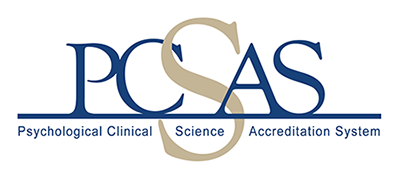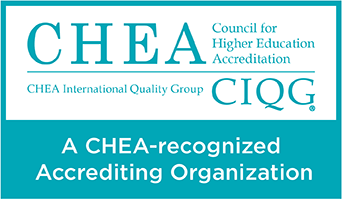by Thomas Harrison, M.A., Stony Brook University
The concept of increasing scientific communication originates in academic publishing in 1665 (Fyfe, 2015). Indeed, the longest running scientific journal, the Philosophical Transactions of the Royal Society was founded to embody empirical philosophy set forth by Sir Frances Bacon (The Royal Publishing Society, n.dab). Here, the sole goal was to increase scientific communication and understanding. As time passed, features similar to the publication process today emerged including, peer-review, language translation, submission in solely one journal, etc. Until around the 20th century, the costs associated with academic printing were the greatest barrier to “open science” (James, 2019). In the early 2000s, the first open access statements appeared from different research communities, aiming to address current limitations of the publication model. The Budapest Open Access Initiative (2013) put forth the first definition of open access, which emphasized unrestricted access to users of peer-reviewed literature (Gasparyan et al., 2013). Paralleling these efforts was the advancement of the internet, which the global academic community hoped would a) increase accessibility to research and b) decrease cost of accessing research.
Below, I use literature to describe and support my opinion on the issues facing publishing as the movement for open access transpires. The previous 300 years of academic publishing that pursued a model of sharing and translating knowledge has become a profit-based, transactional model (see Fyfe, 2018). In fact, the cost of and access to academic publishing have become incredibly challenging, despite advancement of the internet (James, 2017; Tickell 2016). Publishing companies have inherited wealth on the backs of scholars and slowly created subscription-based models (James, 2019; Schiermeier, 2018; Solomon et al., 2016). Indeed, academic and government institutions sign contracts to access research. Importantly, these contracts feature nondisclosure agreements, precluding a well-known, universal market rate. This leaves universities and government institutions to pay $10 billion each year to access science (Belluz, 2015). In the event that individuals do not have university or governmental access, peer-reviewed articles are behind paywalls (Fyfe et al., 2017). Taxpayers who contribute $140 billion to science each year, cannot access the same research they funded (Belluz, 2015). Should non-academic consumers know where to locate and access the research they funded in the first place, many of whom do not, they are paying twice.
To me, the most interesting thing about the publishing process is the transaction of wealth. As academics, accessibility to research through our institution fosters a wealth of knowledge about whatever phenomena we are interested in studying. That same wealth is initially in the hands of the authors (i.e., researchers) who carried out the study we’ve read. After submission of a manuscript, publishers get their wealth (i.e., monetary), by simply placing that same written manuscript into a copyrighted journal template. A 2011 report notes that the science-publishing industry generated $9.4 billion (U.S.) for 1.8 million English-language articles with an average article revenue of around $5,000 (U.S.; Van Noorden, 2013). These profits include the open access publishing costs that researchers pay at time of manuscript submission. BioMed Central and PLoS—two of the largest open access publishers charge on average $1,350-2,250 per peer-reviewed article (Van Noorden, 2013). In contrast, the profits for authors and peer reviewers are zero. As such, the hard work of researchers translates into a contribution to science, while that same copyrighted contribution to science endows publishing companies.
Governmental institutions have tried to address the downfalls of the grip publishing companies have on scientific communication. In 2008, the National Institutes of Health (NIH) required all peer-reviewed articles funded in-part or whole by NIH to be publicly accessible in PubMed Central—a free-full text archive of biomedical and life journal literature, within 12-months of publication (NIH, 2022). Similarly, in 2013, the United States Office of Science and Technology (OST) enacted the Increasing Access to the Results of Federally Funded Research motion, which requires all federal departments and agencies with more than $100 million in annual research and development expenditures to create and implements plans that increase public access to scholarly research (NIH, 2023).
At the same time, academic vigilantes have emerged aiming to increase access through open-sourcing and pirating. To escape paywalls, pirating sites such as Sci-Hub emerged. Sci-Hub is an online website founded by Kazakh neuroscientist Alexandra Elbakyan containing more than 50 million pirated journal articles (Fyfe et al., 2017, James, 2019). Here, users (i.e., researchers, taxpayers, etc.) enter a journal article’s digital object identifier (DOI) and paywalls are overridden. This system operates through users with legitimate access (i.e., paid paywalls fees, at an academic institution that has a journal or database subscription) to voluntarily donate them (i.e., download from an accessible site and upload them to Sci-Hub). To some, the platform embodies civil disobedience and criminal behavior. In response to 26 million downloads from the site in 6 months (Hoy, 2017), Elsevier, the world’s largest academic publisher, filed a lawsuit against Sci-Hub citing copyright infringement and international piracy (Demarco et al. 2015). Despite Elsevier winning more than $15 million in damages, Sci-Hub still operates today (as of 2024).
The advent of online publishing was supposed to be the greatest asset to scientific communication. In contrast to this goal, I believe that our current model limits scientific communication because of publishing companies’ monopolization and large monetary gains. A movement is needed, and it appears most of it will fall onto the hands of the scientific community. There are a few avenues we can take. First, we can make materials directly accessible online through sites such as Open Science Framework, ResearchGate, and PsyArXiv. Additionally, Word document versions of accepted manuscripts could be uploaded to faculty, grad student, and lab websites for free download. At an institutional and faculty level, we can incorporate information about open access into course content to inform both colleagues and trainees about open science. Moreover, adhering to regulations set forth by grant funding agencies (e.g., NIH and PubMed Central) and increasing awareness of these requirements to both academics and laypeople will translate into increased access. Lastly, if you choose that route, you can use and/or upload articles to piracy sites (e.g., Sci-Hub, 12ftLadder).
References
Belluz, J. (2015). Taxpayers spend $140 billion funding science each year—but can’t access many of the results. Retrieved from: https://www.vox.com/2015/1/10/7522713/open-access
Budapest Open Access Initiative (2013). Retrieved from: http://www.budapestopenaccessinitiative.org/read.
Accessed November 24, 2023.
Fyfe, A. (2015). Journals, learned societies and money: Philosophical transactions, ca. 1750-1900. Notes and Records: The Royal Society Journal of History of Science, 69, 277-299.
Fyfe, A. (2018). Publishing the philosophical transactions: The social, cultural, and economic history of a learned journal, 1665-2015-AHRC. Impact, 2018, 33-35.
Fyfe, A. Coate, K., Curry, S., Moxham, S. L. N., & Mork, C. (2017). Untangling academic publishing: A history of the relationship between commercial interests, academic prestige, and the circulation of research. Retrieved from https://zenodo.org/record/546100.
DeMarco, J. V. Hirschberg, D. M. & Sen, U. (2015). Complaint-Document #1 of Elsevier Inc. v. Sci-Hub – Case 1:15-cv-04282-RWS.
Gasparyan, A. Y., Ayvazyan, L., &, Kitas, G. D. (2013). Open access: changing global science publishing. Croatian Medical Journal, 54(4), 403–406. https://doi.org/10.3325/cmj.2013.54.403
Hoy, M. B. (2017). Sci-Hub: What librarians should know and do about article piracy. Medical Reference Services Quarterly, 36, 73-78.
James, J. E. (2017). Free-to-publish, free-to-read, or both? Cost, equality of access, and integrity in science publishing. Journal of the Association for Information Science and Technology, 68, 1584-1589.
James, J. E. (2019). Pirate open access as electronic civil disobedience: Is it ethical to breach the paywalls of monetized academic publishing. Journal of the Association for Information Science and Technology, 71(12), 1500-1504. https://doi.org/10.1002/asi.24351.
National Institutes of Health (2022). NIH Public Access Policy. Retrieved from: https://publicaccess.nih.gov/
National Institutes of Health (2023). Request for information on the NIH Plan to enhance public access to the results of NIH-supported research. Retrieved from: https://grants.nih.gov/grants/guide/notice-files/NOT-OD-23-091.html#:~:text=Since%202013%2C%20federal%20public%20access,plan%20to%20support%20increased%20public
Schiermeier, Q. (2018). Elsevier grants a reprieve. Nature, 553, 137.
Soloman, D. J., Laasko, M., & Bjork, B. C. (2016). Converting scholarly journals to open access: A review of approaches and experiences. Retrieved from http://digitalcommans.unl.edu/scholcom/27.
aThe Royal Publishing Society (n.d.). Philosophical transactions of the Royal Society A: Mathematical, physical and engineering sciences: About Philosophical Transactions A. Retrieved from: https://royalsocietypublishing.org/rsta/about#question5
bThe Royal Publishing Society (n.d.). A history of scientific journals. Lessons from the history of Royal Society journal publishing, 1665-2015. Retrieved from: https://arts.st-andrews.ac.uk/philosophicaltransactions/brief-history-of-phil-trans/
Tickell, A. (2016). Open access to research publications. Independent advice to the UK Minister for Universities and Science. Retrieved from https://www.gov.uk/government/publications/open-access-to-research-independent-advice.
Van Noorden, R (2013). Open access: The true cost of science publishing. Nature, 495, 426–429. https://doi-org/10.1038/495426a


